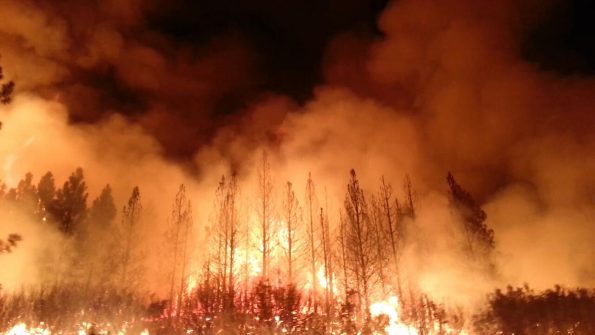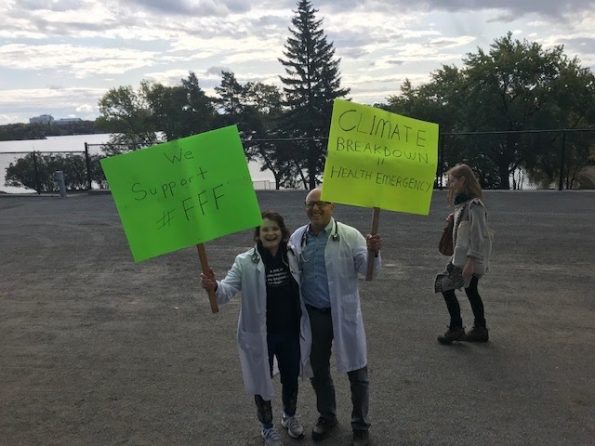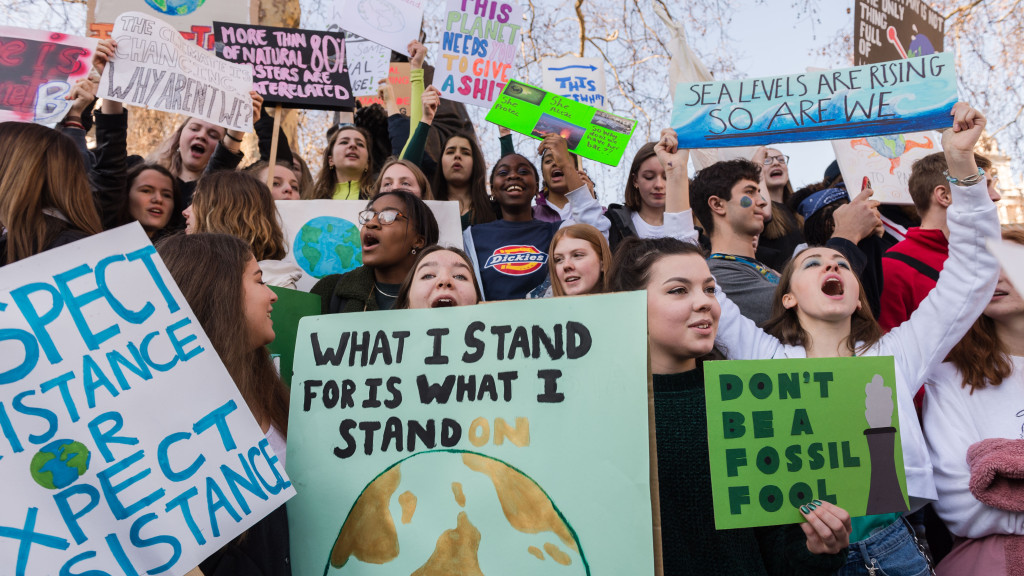I’m a boomer Canadian Emergency physician, with a special interest in climate change.
My oral fellowship exam took place in a small hotel room where facial bone x-rays were held up against the Montreal skyline awaiting my interpretation. I went directly from resident to ED director of what would ultimately become a busy trauma and academic teaching hospital. At the dawn of my career, it was easier to do burr holes on someone than it was to get the radiologist on the phone (landline only) and explain (beg) why the tech should be called in to perform a 16 slice head CT (Body CT’s didn’t exist back then) on an unconscious trauma patient with lateralizing signs.
I have always been interested in looking ‘upstream’ to see what causes an event. Back in 1983, the road to Sudbury was one of the most deadly per mile traveled in North America. So I looked at what was causing these deaths. That was such a long time ago that my first CMAJ publication had the words; “preadmission deaths” in the title because the reviewers had not yet heard the term “prehospital”. Times have changed, and I have been blessed to have had a wonderful career in Emergency Medicine.
Unfortunately, our planet has not fared as well over the years and I am very frightened.

Over my career, global greenhouse gas (GHG) emissions have gone up more than they had since the beginning of the industrial revolution. Since my birth (long, but not that long ago), the average temperature in Sudbury has gone up over 1.5C! This increase in temperature has occurred ten times faster than any other time since humans have walked on earth. This is crazy! The images from the Australian bushfires are apocalyptic, and we have been warned that our own boreal forests are facing similar risk.
The climate that I grew up in no longer exists. Think about that statement. No longer exists. So what can/should we as individuals do? It’s actually pretty simple.
Climate Change
We should all know a bit about climate change, as according to the WHO it is; ‘the greatest health threat of the 21st century”. At a minimum, Greta Thunberg says ‘unite behind the science’. That science tells us that globally we need to reduce our GHG emissions 50% by 2030 if we are to have a 66% chance of limiting global warming to 1.5C. As a rich nation, it has been suggested that Canada’s fair share would be to reduce emissions by 10-15%/ year starting NOW. If you want to know more, there is great information available about climate change. Start by looking at some of the resources found on CAPE’s website.
If you like podcasts, my favorites include Climate One, Citizen’s Climate Lobby, Outrage + Optimism and Mothers of Invention. Another recommendation is the YouTube series ‘Global Weirding‘ by Canadian climate scientist Katharine Hayhoe
A new online learning course on EDX is also very good: Climate Change: The Science and Global Impact. My favourite climate book of 2019: We are the Weather – Saving the Planet begins at breakfast by Jonathan Foer.
Reducing emissions at home
However, we can’t stop at knowledge. Knowledge alone has no effect on climate physics. Fortunately, as citizens, we have control over our personal carbon emissions, who we can influence (our tribe), how we invest our money and how we vote. Jonathan Foer suggests that we all make individual climate pledges, which makes so much sense to me. We are all used to using various metrics to measure progress. Why not here as well?
After reading Jonathan Foer’s book, my wife and I have made a more formal pledge to reduce our GHG emissions in line with the science. As Canadians, this is proving to be quite easy.
First, we moved all of our investments into a fossil-free portfolio last year (I worked with MD Private Financial on this and the portfolio should be available to all MD Private Investors within the next few months). Why divest? Currently, every 1 million dollars invested in the Canadian stock market creates 50 tons of GHG. Divesting will, depending on your net worth, be the biggest (and in some ways, the easiest) thing you can do. You will also avoid, as stated by the current governor of the Bank of England Mark Carney, ”losses as a result of stranded assets” (similar to what happened to coal stocks).
The second personal thing we did was change our diet. Now I love meat but knowing that about 25% of global GHG comes from agriculture, 60% of all land capable of growing crops is used to grow food for livestock, 70% of antibiotics are used for livestock and high animal protein diets cause cancer 4x higher than low animal protein diets, it was obvious that changing our diet had to be part of the pledge. So, for now, it’s going to be vegetarian/vegan four days/week and local fish the other days along with reduced dairy. This change should drop our GHG emissions by about 2000 kg/year and leave us healthier.
Other things that we have tried include cutting our flying way back (jet fuel is particularly bad for our climate). We also switched to plug-in EV’s (once you drive electric you won’t go back), but I still enjoy riding my bike to work more than driving. We also put a 10-kilowatt solar system on our roof – it easily powers two vehicles and the house nine months of the year.
Lastly, Katherine Heyhoe says that the most important thing we can do is talk about climate change. How often does the climate crisis get discussed with your colleagues, family, and friends? Climate change makes many people feel anxious, depressed and powerless. Talking helps. I force myself to have a climate conversation several times each day. With my Thursday night post tennis group, my beyond burger and beer(s) starts the conversation with my 2 for 1 wings and beer buds. Just don’t waste your efforts on the 20% of true climate denialists who are out there. Work on all of the other people in your life.
As an individual, you can do amazing things. Social change requires everyone to try. As an individual you can; write letters to your local paper, participate in Fridays For Future youth strikes, call and meet with your MPs and MPPs and join organizations like CAPE and CCL (Citizen’s Climate Lobby – Canada). You can ask your medical schools, universities, and hospitals to declare that the climate emergency is a health emergency. If they don’t respond, start a petition (it works). This is not a time for business as usual.
If you have more time, try this. Last year, my wife decided to close her family practice and retire so that she could spend more time working on climate change recognizing that a better planet was the most important legacy we could leave to our children and grandchildren. Five months later, my wife and one other retired grandmother were responsible for getting city council to unanimously declare a climate emergency. A subsequent energy plan maps out a path that will meet the IPPC 1.5C report for the whole city. This took hundreds of hours of work – meeting with every city councillor (multiple times), carrying a petition clipboard around for months (even on our ‘dates’) and so much more.
So I will end with this. “Be inspired, energized, and determined. There can be no regrets. We must make 2020 the year we do all that we can do to protect and sustain the natural resources we need to survive and the special places we call home.” Gina McCarthy (former EPA Director).




You have written a very encouraging and engaging piece here. Please keep doing what you’re doing and especially keep telling people what you’re doing.
There’s a sense of brotherhood we need to have in this fight against climate change. Just as Covid-19 has become the #1 issue right now, we have to put climate change (and air pollution, which is my ’cause’) right up there on our most important thing list.
‘See’ and meet you tomorrow!
Hi Dr Bota,
It’s great to read that you are still on “the cutting edge of progress” and “leading the pack”. I would never have expected less from you. Keep leading the charge!